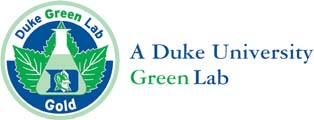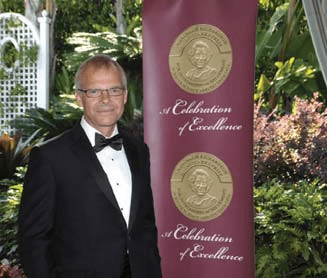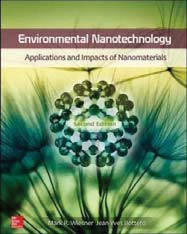NanoTechnology and the Environment: How the Implications of Nano Particles are Studied at the Center for Environment Implications of NanoTechnology
- 21 Aug 2019
- Volume 16
- NanoScientific Magazine, Spring 2019

Duke University is home to several of the world's top environmental programs and is headquarters for the Center for the Environmental Implications of NanoTechnology (CEINT). CEINT is a collaborative effort bringing together researchers from Duke, Carnegie Mellon University, Howard University, Virginia Tech, University of Kentucky, Stanford University, and Baylor.
Duke does fundamental research in environmental engineering focusing on technologies at the energy and environment interface including environmental nanotechnology, membrane science, water treatment, desalination and water reuse, particle transport and surface chemistry in natural and engineered environments.
An Interview with Mark Wisner, Director, Center for Environment Implications of NanoTechnology
The Center for the Environmental Implications of NanoTechnology (CEINT) was created in 2008 with funding from the National Science Foundation and the US Environmental Protection Agency, and performs fundamental research on the behavior of nano-scale materials in laboratory and complex ecosystems. The center was funded by $30 million in grants from the National Science Foundation and the US Environmental Protection Agency (US EPA) over the course of 10 years, and in that decade CEINT published a vast body of work explaining the environmental fate of nanomaterials, and organism and ecosystem responses to exposures to those materials. Research includes all aspects of nanomaterial transport, fate and exposure, as well as ecotoxicological and ecosystem impacts. Additionally, CEINT is developing risk assessment tools to provide guidance in assessing existing and future concerns surrounding the environmental implications of nanomaterials.
CEINT was launched by Duke Professor of civil and environmental engineering and principal investigator Mark Wiesner when the boom in nanotechnology was flooding the markets with nanoparticles in everything from additives to sensors and electronics.
The new center consisting of collaborators from Duke, Carnegie Mellon, Howard University, Virginia Tech, Stanford University, the University of Kentucky and Baylor University, with highly advanced nanoengineering programs began exploring fundamental questions about the fate of nanomaterials in the environment, and the implications of their presence. Their unique approach uses outdoor experimental facilities where water, soil, flora and fauna approximate real freshwater wetland ecosystems.
"GENERALLY, THE IMPACT OF NANOTECHNOLOGY ON THE ENVIRONMENT HAS BEEN EXTRAORDINARILY POSITIVE. NANO HAS ENABLED NEW TECHNOLOGIES FOR MEASUREMENT OF CONTAMINANTS IN THE ENVIRONMENT, IMPROVED WATER AND AIR QUALITY MANAGEMENT TECHNOLOGIES, REDUCED ENERGY USAGE THROUGH MORE EFFICIENT LIGHTING TECHNOLOGIES, BETTER ENERGY STORAGE, SOLAR ENERGY TECHNOLOGIES AND MUCH MORE."

Photo: Founder and Director of CEINT, Mark Weisner was the eighteenth recipient of the NWRI Athalie Richardson Irvine Clarke Prize for excellence in water research in 2011. The Clarke Prize is awarded annually to an outstanding individual residing in the U.S. who has implemented exceptional water science research/and or policy development to solve real-world water challenges, recognized by the International Congress of Distinguished Awards as one of the most prestigious awards in the world. His work in developing nanomaterial-based technologies for water treatment led him to consider the possible detrimental effects that these materials might have on human health and the environment – in effect, pioneering the field of environmental implications of nanotechnology.
Photo: Dr. Mark Weisner, Director of CEINT has made many important contributions on the potential for nanoparticles to accumulate in the environment.
“Nothing is more important than the careful stewardship and development of our water resources” - Mrs. Athalie Richardson Irvine Clarke (The Clarke Prize Founder)
“Our conclusion is that the benefits of manufactured nanomaterials outweigh the risks,” said Dr. Weisner, Director of CEINT and coauthor of Environmental Nanotechnology: Applications & Impacts of Nanomaterial. “Considering the life cycle effects of nanoproduction, we have determined that the risks are relatively small using nano particles that are made from particles we know are safe.”
The goal of the CEINT research is to predict where certain nanomaterials will go in the environment, how long they will stay there and what effect they will have long term. "We have overestimated the risk of nanoparticles in the environment," adds Wiesner, who is also a professor of civil and environmental engineering at Duke. "The role of nanomaterial research is to protect public health and the environment and have the right technologies making their way into the markets. Understanding the actual eff ect of nanomaterials in the environment will help us make decisions about whether or not to use certain ones.”
While we cannot see nanoparticles with the naked eye, investigating their impact on living things and developing tools to assess current and future risk at the Center for Environmental Implications of Nanotechnology tells us how these materials end up in the environment—and what they do once they get there. “The development of nanometrology tools has had an enormous impact on NanoEnvironmental Engineering”, states Dr. Weisner. “Microscopes of today have changed everything because we can image particles of different shapes and sizes, these new tools in microscopy have allowed us to examine exactly what filtered particles are.”
In the new age of nanometrology, images at the nanoscale open new horizons for researchers like the ones entering the CEINT program. “We can begin to characterize the NanoScience world in a way that was not possible 30 years ago,” adds Weisner.
"NANOTECHNOLOGY IS PERHAPS THE FIRST EXAMPLE OF A NEW GROUP OF TECHNOLOGIES THAT HAS BEEN EVALUATED EARLY IN ITS DEVELOPMENT AND COMMERCIALIZATION TRAJECTORY RATHER THAN WAITING FOR ENVIRONMENTAL PROBLEMS TO ARISE. WHILE THERE WILL ALWAYS BE IMPACTS OF ANY HUMAN ACTIVITY ON THE ENVIRONMENT, THE FIELD OVERALL HAS BEEN PROACTIVE IN MINIMIZING THE POSSIBILITY AND THE MAGNITUDE OF SUCH IMPACTS."

Photo: Alumnus Mark Wiesner delivers the keynote speech to December 2017 graduates of the UI College of Engineering where he encouraged engineering graduates to “be scientific, be ethical, and be creative,” and told them to prepare for the future, because “the torch (of technology and science) is being passed to you.”

Photo: Now in the 2nd edition, Environmental Nanotechnology co edited by Mark R. Weisner and Jean-Rves Bottero and co written by a team of leading experts from around the world provides a through look at nanomaterial technologies, their use in engineering applications, and their impact on the environment.